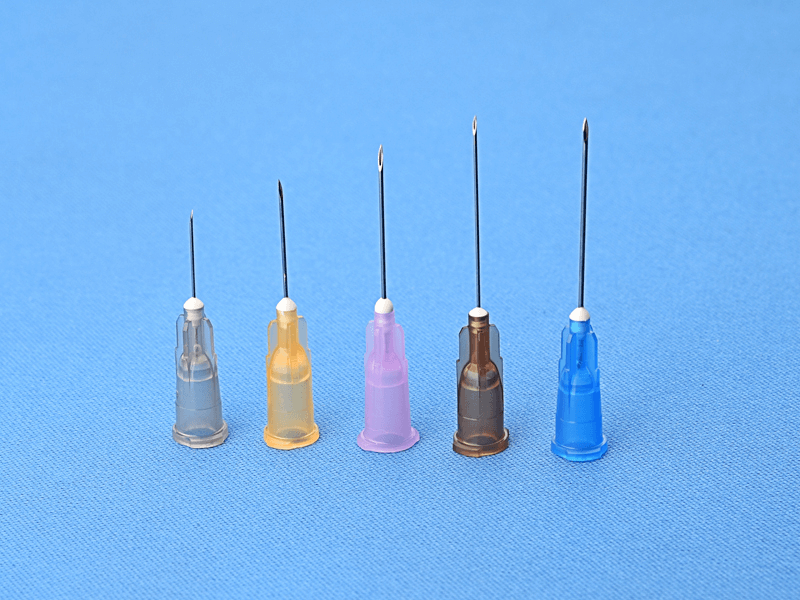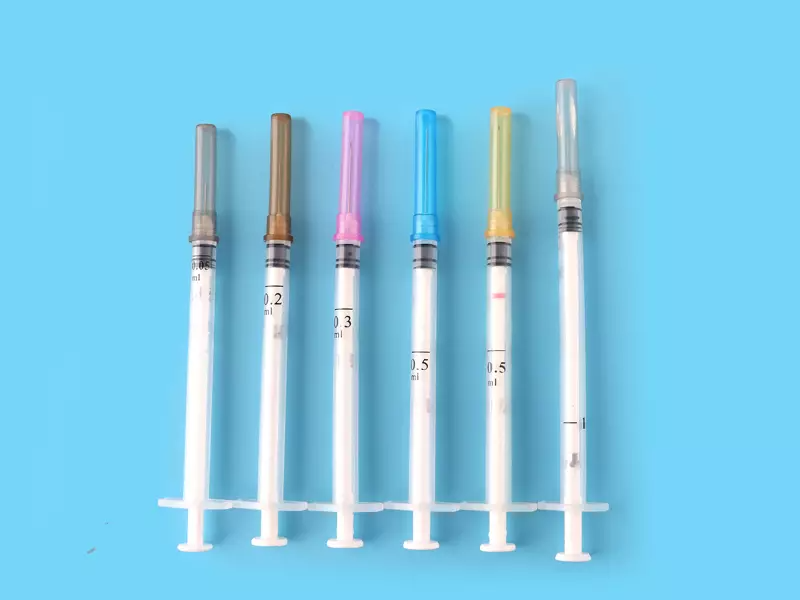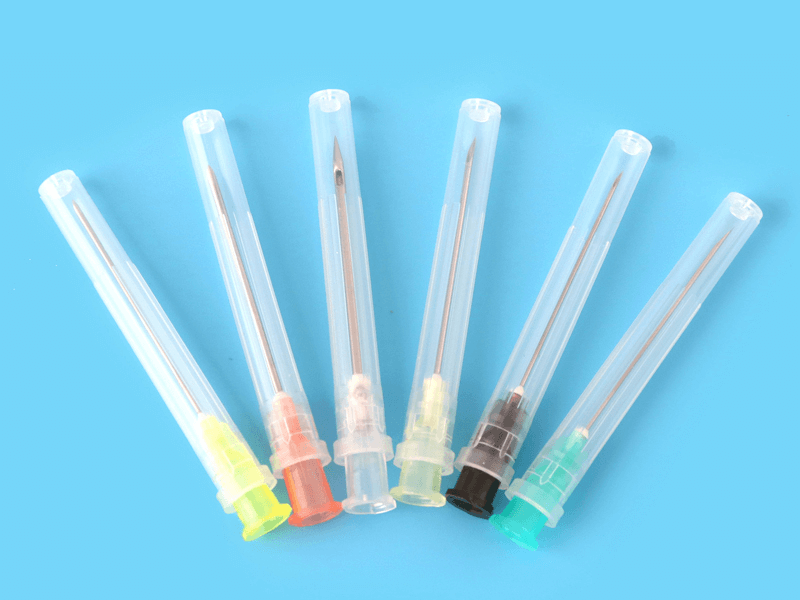That humble syringe in your hand holds a small but mighty secret: its connection type. Luer Lock or Luer Slip? It’s a decision that echoes from the research lab to the patient bedside, a seemingly trivial choice with surprisingly significant consequences. One wrong move could mean a critical leak during a high-pressure injection or a frustrating fumble when speed is paramount. This isn’t just about a simple twist versus a push; it’s a fundamental choice between unwavering security and streamlined efficiency. Before you commit your budget and your team to one or the other, let’s settle the debate. We’re about to demystify the engineering behind these two titans of the medical world, ensuring your next choice is not just a guess, but a strategic decision.
So, You Need Syringes. Lock or Slip? Let’s Settle The Debate.
As a purchasing manager or a clinical lead, your day is a constant balancing act of cost, efficiency, and safety. The choice between Luer Lock and Luer Slip syringes is a perfect example of this. You need to equip your team with the right tools for the job, but the “right” tool isn’t always a one-size-fits-all solution.
I’ve spent years in the medical supply industry, working directly with manufacturers and end-users. I’ve seen firsthand how a simple
syringe hub type
can impact workflow efficiency in clinics, influence patient safety, and affect the bottom line. Let’s cut through the noise and get straight to what matters for your next purchase order.

The Quick Answer: Luer Lock vs. Luer Slip
- Luer Lock: Choose this for a secure, leak-proof syringe connection that’s essential for high-pressure applications, handling viscous fluids, or any situation where accidental disconnection could be catastrophic (e.g., IV therapy, chemotherapy). It’s your go-to for security.
- Luer Slip: Choose this for speed and ease of use in low-pressure, routine tasks where rapid needle changes are common (e.g., simple injections, vaccinations). It’s your go-to for efficiency and cost-effectiveness.
At a Glance: The Ultimate Luer Lock vs. Luer Slip Comparison Chart
For a busy professional like you, sometimes a chart is worth a thousand words. Here’s a breakdown of the key criteria you should consider.
| Feature | Luer Lock Syringe | Luer Slip Syringe |
|---|---|---|
| Connection Mechanism | Threaded syringe tip; twist-on and lock | Friction-fit syringe; push-on |
| Connection Security | High. Provides a secure, stable, and leak-proof seal. | Lower. Relies on friction; risk of disconnection under pressure. |
| Best For | High-pressure injections, viscous fluid handling, critical care. | Low-pressure, rapid injections, frequent needle changes. |
| Primary Advantage | Accidental disconnection prevention. Supreme safety and reliability. | Speed and ease of use. Quick, simple, and efficient. |
| Potential Downside | Slightly slower to connect/disconnect; higher initial cost. | Not suitable for high pressure; potential for leaks if not properly seated. |
| Common Use Cases | IV therapy, chemotherapy administration, contrast media injection, epidurals, industrial adhesives. | Subcutaneous injection, intramuscular injection, vaccinations, drawing blood, wound flushing. |
| Cost | Generally more expensive. | More cost-effective syringes. |
| Keywords | Twist-on syringe, secure connection, leak-proof | Push-on syringe, rapid connection, general use |
What’s the Big Deal, Anyway? Understanding the Core Connection
At the heart of this debate is the Luer taper, a standardized design that ensures
Luer connector compatibility
across the industry. Developed in the 19th century, this brilliant piece of engineering features a specific 6% Luer taper on both male and female fittings. This allows different components—like a
hypodermic syringe
and a needle—to fit together seamlessly.
The genius of the system is its universality. But within that system, two dominant connection types emerged, each with a unique approach to securing that connection.
Meet the Luer Lock: The “Twist and Shout” of Secure Connections
The Luer Lock is the workhorse of security. It takes the standard Luer taper and adds a threaded collar to the syringe hub. To attach a needle or other device, you push it onto the taper and then twist the collar to lock it firmly in place.
Think of it like a bottle cap. The push creates the initial seal, but the twist is what guarantees it won’t pop off unexpectedly. This threaded syringe tip is the key to its strength, creating a robust and reliable bond that can withstand significant pressure and movement. This design is fundamental to accidental disconnection prevention, a critical factor inpatient safety
And the Luer Slip: The “Push and Go” for Speed and Simplicity
The Luer Slip is the champion of speed. It uses the classic Luer taper in its purest form. There are no threads. You simply push the needle hub directly onto the syringe’s smooth, tapered tip. The friction between the two surfaces holds them together.
It’s quick, it’s intuitive, and it’s incredibly efficient when you need to perform many injections or change needles frequently. This push-on syringe design is all about minimizing fuss and maximizing workflow.
The Luer Lock Syringe: A Deep Dive for Smart Buyers
When the stakes are high, the Luer Lock is the undisputed king. It’s designed for situations where a connection failure is not an option. As someone making purchasing decisions, you need to understand precisely when this extra security is a non-negotiable investment.
Why You’ll Love It: The Unbeatable Advantages of a Secure Lock
- Unparalleled Security: This is the Luer Lock’s main claim to fame. The threaded connection creates a secure syringe connection that is virtually impossible to dislodge accidentally. This is mission-critical when handling hazardous drugs like chemotherapy agents or during delicate procedures like epidurals. Any spill or disconnection could have severe consequences.
- Perfect for High-Pressure and Viscous Fluids: Are you dealing with thick medications or performing high-pressure injections? A Luer Slip might pop off. The Luer Lock, however, is built to handle the force required for viscous fluid handling or injecting contrast media for imaging studies. The connection remains stable and leak-proof.
- Reduces Medication Errors and Waste: A secure connection means a reliable fluid path. This minimizes the risk of leaks, which not only wastes expensive medication but can also lead to under-dosing a patient. The reliability of a Luer Lock helps ensure the right dose is delivered every single time, contributing to medication error prevention .
- Enhances Safety for Staff: Accidental disconnection doesn’t just pose a risk to patients. It can lead to splashes of hazardous materials or needlestick injuries for your clinical staff. Investing in Luer Locks is an investment in needle-stick injury reduction and a safer work environment. I’ve seen facilities dramatically reduce exposure incidents just by standardizing on Luer Locks for certain procedures.
What to Watch Out For: The Minor Trade-offs You Should Know
While the benefits are immense, it’s important to be aware of the trade-offs:
- Slightly Slower Connection: The need to twist and lock the connection adds a second or two to the process. In most cases, this is negligible. However, in a true high-speed, high-volume scenario like a mass vaccination syringe clinic, those seconds can add up.
- Higher Cost: The more complex manufacturing process means Luer Lock syringes are typically more expensive than their Luer Slip counterparts. This is a classic syringe cost vs security debate. However, I always advise purchasing managers to weigh this higher initial cost against the potential costs of an adverse event—medication waste, staff injury, or patient harm. In many cases, the Luer Lock pays for itself in risk mitigation alone.
The Luer Slip Syringe: When Is It the Right Tool for the Job?
Don’t let the Luer Lock’s security advantages make you think the Luer Slip is obsolete. Far from it. The Luer Slip syringe is an essential, cost-effective tool that excels in a huge range of everyday clinical and laboratory tasks. Its design is a testament to simplicity and efficiency.
The Perks of Simplicity: Why Luer Slip Shines in Routine Tasks
- Unmatched Speed and Efficiency: The “push and go” nature of a friction-fit syringe is its greatest strength. For a nurse administering dozens of routine intramuscular injection or subcutaneous injection shots in a day, the ability to quickly swap needles without twisting saves time and reduces repetitive motion strain. This is a huge factor in workflow efficiency in clinics .
- Excellent for Low-Pressure Applications: For standard injections where the fluid is not viscous and the pressure is low, a Luer Slip provides a perfectly adequate and reliable connection. Think routine vaccinations, insulin shots, or drawing blood for a standard test. The connection is more than sufficient for these tasks.
- Cost-Effectiveness: When you’re purchasing in bulk for general-purpose use, the lower price point of Luer Slip syringes can lead to significant budget savings. They are the definition of cost-effective syringes, making them an ideal choice for high-volume, low-risk applications.
- Tactile Feedback: Some experienced clinicians prefer Luer Slip syringes for certain delicate tasks because they can “feel” the connection being made. While subjective, this tactile feedback can provide an extra layer of confidence for some users during procedures like drawing blood .
Know Its Limits: The Potential Downsides of a Friction-Fit
The simplicity of the Luer Slip is also the source of its limitations. As a buyer, you must ensure they are not used in situations they weren’t designed for.
- Risk of Disconnection: This is the most significant drawback. Under high pressure, with viscous fluid, or even with an accidental tug on the line, the friction fit can fail. This makes them unsuitable for critical infusions or hazardous drug administration.
- Potential for Leaks and Aerosolization: If the needle isn’t seated perfectly, or if it loosens during use, there’s a risk of leakage. In some cases, this can create an aerosol of the medication, which is a major concern with certain drugs.
Choosing Your Champion: Real-World Use Cases from the Clinic to the Lab
Theory is great, but let’s talk about the real world. As a purchasing manager, your goal is to match the tool to the task. Here’s a practical guide based on common applications.
When to Insist on Luer Lock: Critical, High-Pressure, and High-Stakes Scenarios
You should make Luer Lock syringes the standard protocol for any of the following applications. This is a crucial part of your risk assessment for medical devices
- IV Therapy and Infusions: For any continuous intravenous line, especially in a syringe for critical care setting, a Luer Lock is mandatory. It prevents accidental disconnection that could interrupt life-saving medication or introduce air into the line.
- Chemotherapy Administration: The toxic nature of chemotherapeutic agents makes this a no-brainer. A leak-proof syringe is essential to protect both the patient and the healthcare provider.
- Contrast Media Injections: Power injectors for CT and MRI scans use high pressure to deliver contrast dye quickly. A Luer Lock is the only connection type that can safely handle these forces.
- Handling Viscous or Expensive Medications: Any thick medication or a drug that is extremely expensive justifies the added security of a Luer Lock to prevent waste and ensure accurate delivery.
- Industrial and Laboratory Applications: In industrial fluid dispensing , especially with high-value materials like syringe for adhesives , or in pharmaceutical manufacturing , the secure connection of a Luer Lock prevents costly errors. Similarly, in the lab, it’s preferred for reagent dispensing when precision is key.

Where Luer Slip Excels: Fast, Simple, and Low-Pressure Applications
Luer Slip syringes are the cost-effective and efficient choice for these routine tasks:
- Standard Vaccinations: For flu shots or other routine immunizations, the speed of a Luer Slip is a major advantage.
- Subcutaneous and Intramuscular Injections: Most common injections (e.g., insulin, B12) are low-pressure and perfectly suited for Luer Slip syringes. The insulin syringe type is often a Luer Slip for this reason.
- Drawing Blood (Phlebotomy): While either can be used, many phlebotomists prefer the quick action of a Luer Slip for routine blood draws.
- Wound Flushing and Irrigation: The simple push-on connection is ideal for attaching a catheter or tip to flush a wound with saline.
- Oral Medication Syringe: When administering liquid medication orally (especially to children or animals), a Luer Slip allows for easy attachment of a tip, without the need for a needle.
- Veterinary Syringe Use: For routine pet vaccinations and simple injections, Luer Slips are widely used in veterinary clinics.
The Non-Negotiable: Why ISO 80369 Standards Are Your Best Friend
Regardless of whether you choose Luer Lock or Luer Slip, there’s one thing that is absolutely non-negotiable: compliance with medical device standards. As a purchasing manager, the term ISO 80369should be at the top of your checklist.
This set of standards is your ultimate assurance of safety and compatibility. It’s designed to prevent the single most dangerous error in fluid delivery: misconnections.
A Quick History Lesson: From ISO 594 to ISO 80369-7
For decades, the ISO 594 standard governed Luer fittings. But as medical devices became more complex, the risk of connecting, for example, an IV line to an enteral feeding tube became a serious concern.
To address this, the International Organization for Standardization developed the ISO 80369 series. Each part of the standard governs a different type of small-bore connector for a specific application (e.g., breathing systems, enteral feeding, neuraxial).
The part that matters to us here is ISO 80369-7. This standard now specifically governs Luer connectors for intravascular and hypodermic applications. It sets stricter requirements for dimensions, performance, and testing than the old ISO 594. Since December 2023, the FDA has fully endorsed ISO 80369-7, making syringe compliance FDA a critical purchasing criterion.

What This Means For Your Purchase Order: Ensuring Compliance and Safety
When you partner with a manufacturer like us at Ary Medical, you should always verify that the products conform to ISO 80369-7. Here’s why it matters:
- Guaranteed Compatibility: It ensures that any compliant Luer Lock or Luer Slip syringe will work perfectly with any compliant needle, catheter, or other fitting.
- Prevents Misconnections: By standardizing the Luer for only intravascular and hypodermic use, it reduces the chance that it could be accidentally connected to a different delivery system.
- Mandatory Quality Testing: The standard requires rigorous Luer connector testing , including tests for leakage, resistance to separation, and stress cracking. This guarantees a higher quality and more reliable product.
Always ask your supplier for documentation proving compliance. It’s your best defense against subpar products and your strongest commitment to patient safety.
Your Final Checklist: 4 Questions to Ask Before You Buy
Feeling more confident? Great. To make your next syringe purchasing guide, here are four simple questions to finalize your decision.
- What is the primary application? Is it a high-pressure, high-risk procedure or a low-pressure, routine task? This is the most important question.
- What is the viscosity of the fluid? Thick, viscous fluids demand the security of a Luer Lock. Standard, water-like fluids are fine with a Luer Slip.
- What is the trade-off between speed and security for this task? In an emergency room or a high-volume clinic, does the speed of a Luer Slip outweigh the absolute security of a Luer Lock? Or is the procedure critical enough that an extra second for security is well worth it?
- What does the budget allow, and what is the cost of failure? While Luer Slips are cheaper upfront, what is the potential cost of a disconnection? Consider wasted medication, cleanup, and potential harm. Your syringe selection criteria should always balance initial cost with total risk.
The Bottom Line: Making the Smart Choice for Your Team and Your Budget
The Luer Lock versus Luer Slip debate isn’t about one being “better” than the other. It’s about choosing the right tool for the right job.
- The Luer Lock is your specialist for security. It’s the non-negotiable choice for critical, high-pressure, and high-risk applications where failure is not an option.
- The Luer Slip is your workhorse for efficiency. It’s the smart, cost-effective choice for fast-paced, low-risk, routine tasks where speed and simplicity are key.
By understanding the distinct advantages and limitations of each syringe connection type, aligning your choice with real-world applications, and insisting on ISO 80369-7 compliance, you can make an informed, strategic decision. You’ll not only optimize your budget but also enhance workflow efficiency and, most importantly, uphold the highest standards of patient and staff safety.

